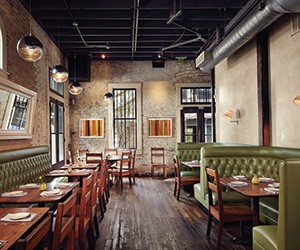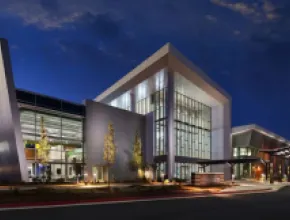Those who look for the heart of Texas often find it in Austin. It’s not only the capital city, it’s also the state’s geographical vortex, home to the University of Texas and gateway to the legendary Texas Hill Country.
As one of the most rapidly growing high-tech and business cities in the country, Austin also offers a lot of lakes and hills as well as its acclaimed array of live music venues.
Meetings Ascendant
While Austin has attracted visitors seeking its leisure attributes for decades, the capital’s reputation as an international and national meetings city is a more recent development.
“Austin is in some cases a new destination for national and international planners,” says Steve Genovesi, director of sales and marketing for the Austin CVB. “We have received many accolades as a tourism destination and for livability, but many people haven’t yet visited. So when planners put Austin on the table for consideration, there’s the likely assurance that attendees will know about it and have the desire to check us out.”
Austin is also rising in popularity as a meetings city due to its growing hotel inventory and youthful, university culture that appeals to associations looking to grow their membership among young professionals.
Additionally, some business sectors are lifting Austin’s meetings profile.
“Austin’s moniker ‘Silicon Hills’ is well placed,” Genovesi says. “Most of the large tech companies like Facebook, Google, Apple and of course, Dell, have a large presence here. The university has played a big part in this development because it offers many resources for recruiting and the synergy which has embraced the tech industry.”
With the city’s hospitals and a university medical school, Genovesi says another growing sector is medical meetings, which is partial to luxury brands like Four Seasons Hotel Austin.
Expanding Portfolio
Austin’s big hotel news is the rising JW Marriott Austin, a 1,012-room convention property set to open in 2015. Located two blocks from the nearly 900,000-square-foot Austin Convention Center, it will feature 115,000 square feet of flexible meeting and event space and will bump Austin’s downtown room count to over 7,000.
Opening the same year adjacent to the convention center is a 1,025-room hotel by Manchester Texas Financial Group. The property will add 100,000 square feet of meeting space to the downtown inventory, along with multiple restaurants and a sky bar lounge on its 34th floor.
Other popular meetings properties include the Hilton Austin, located adjacent to the convention center; the legendary Driskill Hotel, a luxury member of Historic Hotels of America; and The Westin Austin at the Domain.
Thanks to the annual South by Southwest event for tech, music and film, which requires the latest and greatest tech amenities, Austin Convention Center is equipped with the most robust tech amenities, according to Genovesi.
“Many convention centers simply can’t match what we have in the way of complimentary and in-house services,” he says. “We assure planners that the wireless we offer in the center is cutting-edge and complimentary.”
Access is another strong suit for Austin. The city sits along Texas’ Interstate 35 spine, while Austin-Bergstrom International Airport has nearly 100 nonstop and direct flights daily among 329 total daily flights. In 2011, the airport served 9 million passengers and is one of the few airports in the U.S. that has received new flights with Southwest and Delta airlines this year. It was also named one of the top three airports in North America for the fifth consecutive year by The Airports Council International.
Downtime Diversions
Austin is serious about government, tech, higher education and other essential pursuits, but attendees find the arts, recreation and entertainment just as plentiful.
There’s the world-famous live music and performing arts atmosphere, as well as lots of adventure and touring options, not to mention the city’s eclectic dining scene, where barbecue and Tex-Mex head the lineup.
This is, afterall, the “Live Music Capital of the World,” with over 200 venues where all manner of musicians entertain any night of the week. The Sixth Street corridor downtown and the Warehouse District just west of downtown are home to famous establishments such as Antone’s, Broken Spoke, Stubb’s and Saxon Pub.
But visitors find Austin’s music culture in other venues besides its pubs and clubs. The Long Center for the Performing Arts, with its multiple theaters and concert halls, is home to the Austin Symphony Orchestra, the Austin Lyric Opera and Ballet Austin. The Long’s mission is to support community performing arts groups as well as professional organizations with its facilities and programs.
Creative arts are also plentiful in the vintage shops and boutiques within Austin’s shopping districts, especially on South Congress Avenue. Known as the “hip strip,” “SoCo” is a must-see for visitors, who can snag a kitschy T-shirt at Parts & Labour and try on cowboy boots at Heritage Boots or Allen’s Boots. Outside the city, there are outlets with designer names at discount prices.
The culturally inclined can also check out the Bob Bullock Texas State History Museum, featuring three floors of exhibits and a 400-seat IMAX Theatre presenting Texas: The Big Picture. Meanwhile, The LBJ Presidential Library & Museum Houses 45 million pages of documents from the public career of Lyndon Baines Johnson and his associates. The Lady Bird Johnson Wildflower Center honors the first lady’s efforts to increase sustainable use and conservation of native wildflowers, plants and landscapes. Both of the Johnson sites and the Bullock museum have auditoriums and other venues available for groups.
Away from the city’s business core, there are hills, lakes and woods. Riverboat cruises, zip-line tours, horseback riding, rock climbing, canoeing, kayaking and cycling are all on the activity list. Attendees can walk or bike around Lady Bird Lake’s 10-mile trail or take a leisurely hike up Mount Bonnell, which offers views from the highest point within Austin’s city limits.
Hill Country
Just outside Austin’s big city bustle is the famed Texas Hill Country, a serene and scenic alternative for meetings.
Surprises in this region await those who think Texas rides on one flat plane. Besides its rolling scenic beauty and geological features left by an ancient sea, the Hill Country holds some of the state’s most interesting frontier history, recreational opportunities, wineries and unique attractions. Fascinating small towns like Bandera, Wimberley, Leakey, Kerrville and Fredericksburg populate the Hill Country, and Austin and San Antonio are its gateways.
Luxury properties like Barton Creek Resort & Spa, with four championship golf courses, and Hyatt Regency Lost Pines Resort and Spa, with 300,000 square feet of indoor and outdoor meeting space, are among the meetings choices. Unique properties are in the mix, too, including the World War II-themed Hangar Hotel at the county airport near Fredericksburg. The property has conference center space for up to 350 people.
Lakeway Resort and Spa near Austin is the perfect 166-room complement to the lively atmosphere of Austin. Set at the edge of the Texas Hill Country on Lake Travis, it has ballroom and other meeting facilities for up to 350, water sports, nearby golf and a calming natural environment.
Several major resorts lie just north of San Antonio, including The JW Marriott San Antonio Hill Country Resort & Spa, featuring 1,002 guest rooms and suites, 140,000 square feet of meeting space, two championship golf courses and a 26,000-square-foot spa. Meanwhile, Westin La Cantera Resort has 500 guest rooms and suites and 39,000 square feet of function space.
Ruth A. Hill is a Texas native and frequent contributor to Meetings Focus South.






